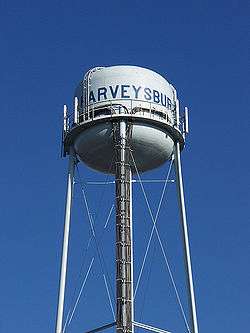Potable water diver
A potable water diver works in a potable water tank performing inspection and cleaning tasks.

Divers can inspect water storage tanks, towers and clearwells without draining them or taking them out of service. The work is classified as commercial diving and diver qualifications, equipment and dive team composition will generally be regulated.[1] The American Water Works Association (AWWA) publishes a technical standard, C652, that outlines recommendations for divers in potable water facilities.[2] The diver is totally encapsulated (no part of the diver's body touches the water) in a drysuit and helmet, and then washed down with a 200 ppm chlorine solution prior to entry into the tank. All diving dress is to be used exclusively in drinking water. This meets AWWA standards for entering a public water system. The diver is able to move about the tank to perform inspections or clean the tank. AWWA recommends removing sediment accumulations over 0.5 inches (1.3 cm) deep from the floor of a drinking water tank because it can harbor bacteria and/or other contaminants which could adversely affect water quality. Using a specially equipped pump or airlift system the diver can remove loose sediment without damaging painted surfaces. This allows the chlorine in the system to function more effectively. Divers are an effective means to clean and inspect potable water storage tanks because all of the maintenance can be done while the tank remains in-service and full of water, though it may be necessary to close all inlet and outlet valves during the operation as they may present an unacceptable pressure difference hazard, and most of the interior surfaces of the tank can be easily accessed.
Diving in a tank presents hazards, particularly in all water towers (EST) and ground tanks (GST) above 100,000 U.S. gallons (380,000 L). Divers require confined-space training and working at heights certification. In the USA commercial diving operations require at least one trained tender, a diver, and a supervisor. Surface-supplied air with two-way voice communications with the diver and a safety rope are preferred. The Occupational Safety & Health Administration regulation 29 CFR Part 1910, Subpart T allows scuba with a rope for basic communications.[3] The diver should wear a harness, connected to a safety rope, so that in case of an emergency the dive tender can pull the diver up. Diving contractors always need to check the safety legislation appropriate to their local jurisdiction.[4]
References
- ↑ Ron Perrin, Inspecting & Cleaning Potable Water Storage Xlibris Corporation, ISBN 1477160760, page 112
- ↑ American Water Works Association, Disinfection of Water-Storage Facilities, ANSI/AWWA C652-11, section 4.4.5
- ↑ "CPL 02-00-151 - 29 CFR Part 1910, Subpart T – Commercial Diving Operations". US Department of Labor. 13 June 2011. Retrieved 6 February 2016.
- ↑ Australian Tank Maintenance, Field Technician